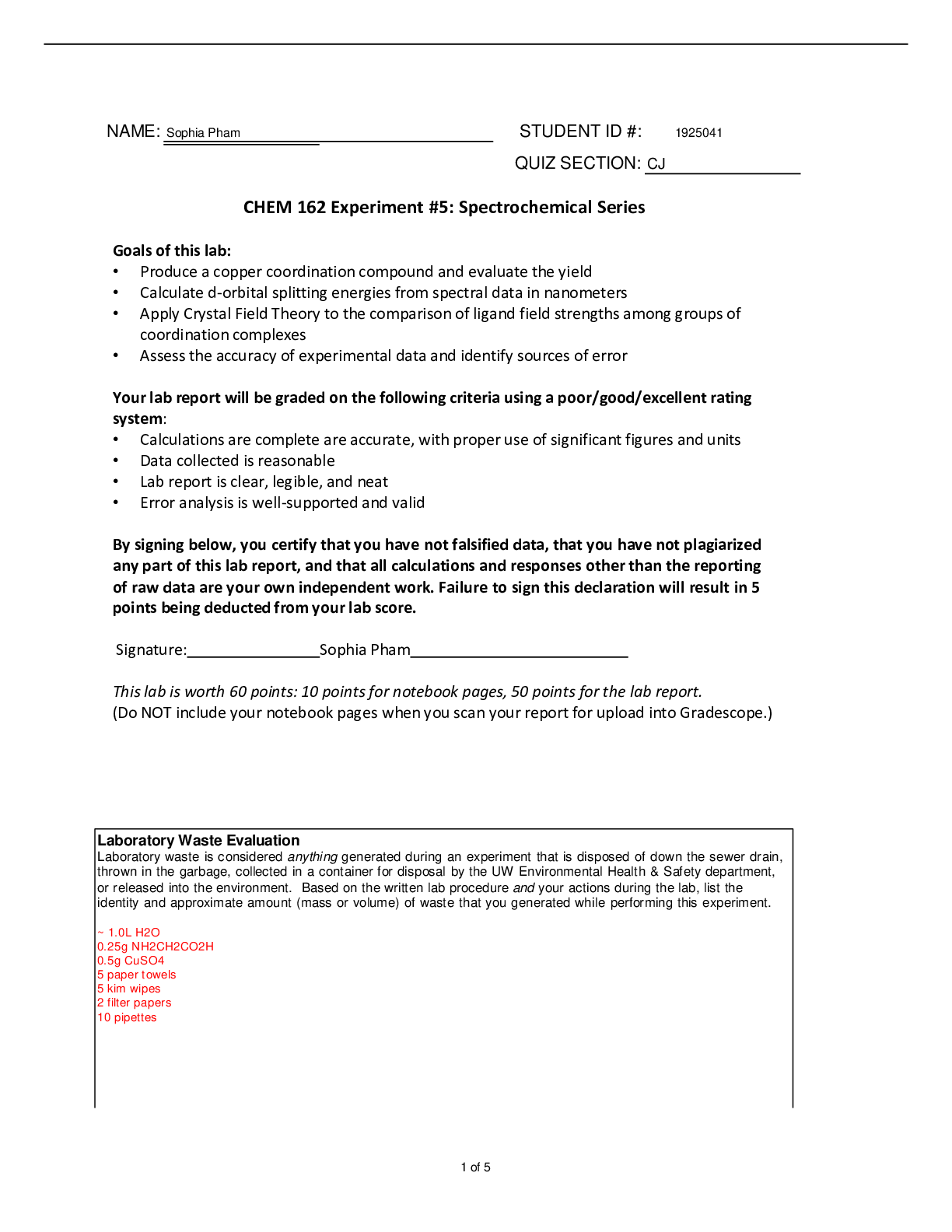*NURSING > Lab Report > NR304 Study Guide Exam guaranteed 100% (All)
NR304 Study Guide Exam guaranteed 100%
Document Content and Description Below
1. Peripheral Vascular System and Lymphatic System – Chapter 20 - Anatomy and Physiology a. Arteries - The heart oxygenated blood through the arteries to all body tissues. The pumping heart makes ... this a high-pressure system. The artery walls are strong, tough, and tense to withstand pressure demand. Arteries contain elastic fibers, which allow their walls to stretch with systole and recoil with diastole. They also contain muscle fibers (vascular smooth muscle), which control the amount of blood delivered to the tissues. The vascular smooth muscle contracts or dilates, which changes the diameter of the arteries to control de rate of blood flow. Each heartbeat creates a pressure wave, which makes the arteries expand and then recoil. It is the recoil that propels blood through like a wave. All arteries have this pressure wave, or pulse, throughout their length, but you can feel it only at body sites where the artery lies close to the skin and over a bone. Temporal Artery – is palpable in front of the ear. Carotid Artery – The carotid artery is palpated n the groove between the sternomastoid muscle and the trachea. Structure and Function – Arteries in the Arm: the major artery supplying the arm is the brachial artery, which runs in the biceps-triceps furrow of the upper arm and surfaces at the antecubital fossa in the elbow medial to the biceps tendon. Immediately below the elbow the brachial artery bifurcates into the ulnar and radial arteries. These run distally and form two arches supplying the hand; these are called the superficial and deep palmar arches. The radial pulse lies just medial to the radius at the wrist; the ulnar artery is in the same relation to the ulna, but it is deeper and often difficult to feel. The function of arteries is to supply oxygen and essential nutrients to tissues Complete blockage leads to death of distal tissue Partial blockage creates an insufficient supply, and ischemia may be apparent only at exercise when oxygen needs increase Structure and Function: Arteries in the Leg – the major artery to the leg is the femoral artery, which passes under the inguinal ligament. The femoral artery travels down the thing. At the lower thigh it courses posteriorly; then it is termed the popliteal artery. Below the knee the popliteal artery divides. The anterior labial artery travels down the front of the leg to the dorsum of the foot, where it becomes the dorsalis pedis. In back of the leg the posterior tibial artery travels down behind the medial malleolus and forms the plantar arteries in the food. The function of the arteries is to supply oxygen and essential nutrients to the tissues. Ischemia is a deficient supply of oxygenated arterial blood to a tissue caused by obstruction of the blood vessel. A complete blockage leads to death of the distal tissue. A partial blockage creates an insufficient supply, and the ischemia may be apparent only at exercise when oxygen needs increase. Peripheral artery disease PAD affect noncoronary arteries and usually refers to arteries supplying the limbs. *** Please note that this is meant to serve as an augmentation tool. Students ARE subject to be tested any material related to readings, simulations, labs, assignments and activities within the course. *** 1 Exam Study Guide It usually is caused by atherosclerosis, and less commonly by embolism, hypercoagulable states, or arterial dissection. b. Veins – The course of the veins is parallel to the arteries, but the direction of flow is opposite; the veins absorb CO2 and waste products from the periphery and carry them back to the heart. The body has more veins, and they lie closer to the skin surface. Jugular Veins – the jugular veins empty unoxygenated blood directly into the superior vena cava. Because no cardiac valve exists to separate the superior vena from the right atrium, the jugular veins give information about activity on the right side of the heart. Specifically they reflect filling pressure and volume changes. Because volume and pressure increase when the right side of the heart fails to pump efficiently, the jugular veins expose this. Veins in the Arm – each arm has two sets of veins: superficial and deep. The superficial veins are in the subcutaneous tissue and are responsible for most of the venous return. Vein in the Leg – the legs has 3 types of veins 1. The deep veins run alongside the deep arteries and conduct most of the venous return from the legs. These are femoral and popliteal veins. As long as these veins remain intact, the superficial veins can be excised without haring he circulation. 2. The superficial veins are the great and small saphenous veins. The great saphenous veins, inside the leg, starts at the medial side of the dorsum of the foot. You can see it ascend in front of the medial malleolus; then it crosses the tibia obliquely and ascends along the medial side of the thigh. The small saphenous veins, outside the leg, starts on the lateral side of the dorsum of the foot and ascends behind the lateral malleolus, up the back of the leg, where it joins the popliteal vein. Blood flows from the superficial veins into the deep leg veins. 3. Perforators are connecting veins that join the two sets. They also have one-way valves that route blood from the superficial into the deep veins and prevent reflux to the superficial veins. Structure and Function: Venous Flow Veins drain the deoxygenated blood with its waste products from the tissues and return it to he heart. Unlike the arteries, veins are a low-pressure system. Because they do not have pump to generate their blood flow, they need a mechanism to keep blood moving. This is accomplished by: 1. the contracting skeletal muscles that milk the blood proximally, back toward the heart. 2. the pressure gradient caused by breathing, in which inspiration makes the thoracic pressure decrease and the abdominal pressure increase. 3. the intraluminal valves, which ensure unidirectional flow. Each valve is a paired semilunar pocket that opens toward the heart and closes tightly when filled to prevent back flow of blood. [Show More]
Last updated: 3 years ago
Preview 1 out of 12 pages

Buy this document to get the full access instantly
Instant Download Access after purchase
Buy NowInstant download
We Accept:

Reviews( 0 )
$9.50
Can't find what you want? Try our AI powered Search
Document information
Connected school, study & course
About the document
Uploaded On
Jun 05, 2021
Number of pages
12
Written in
All
Additional information
This document has been written for:
Uploaded
Jun 05, 2021
Downloads
0
Views
91

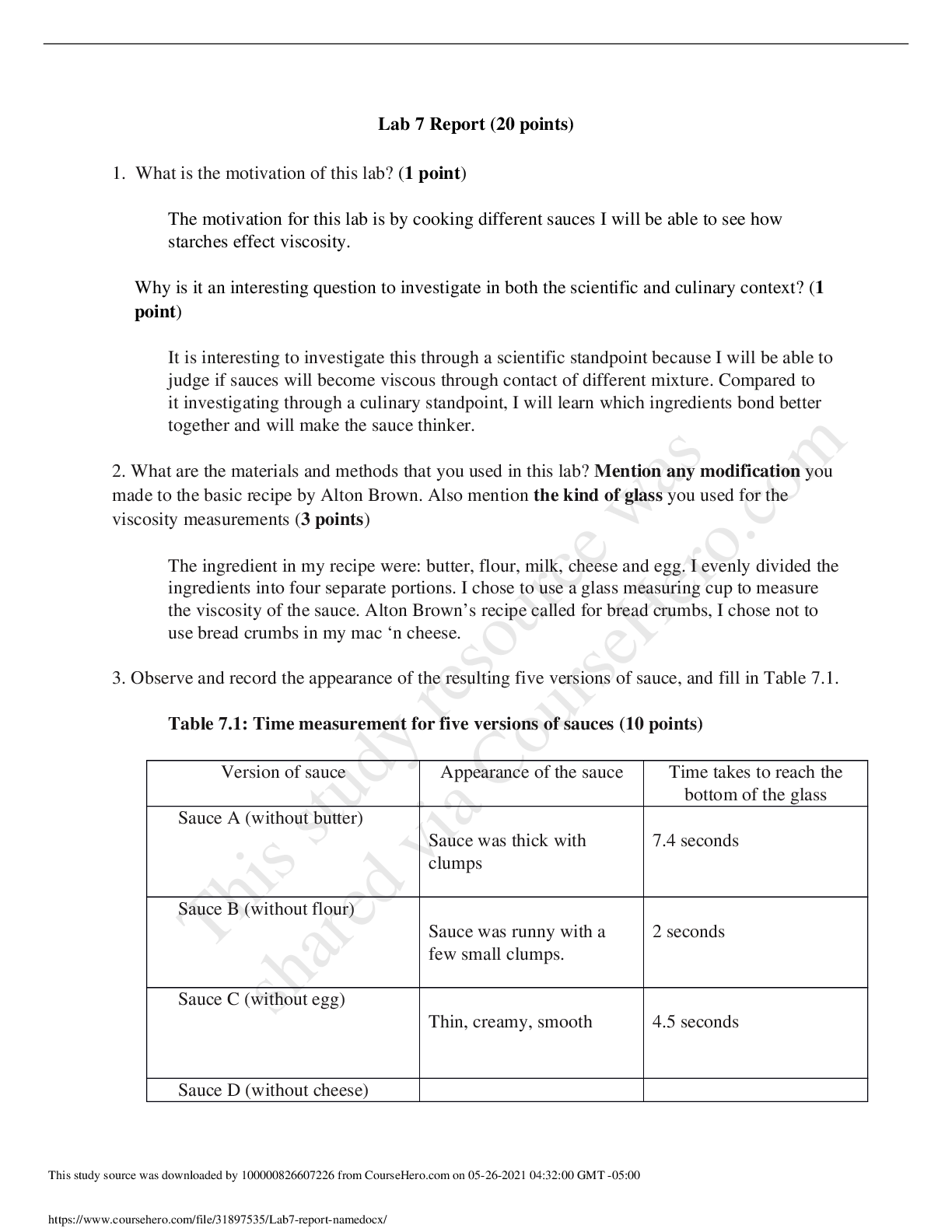
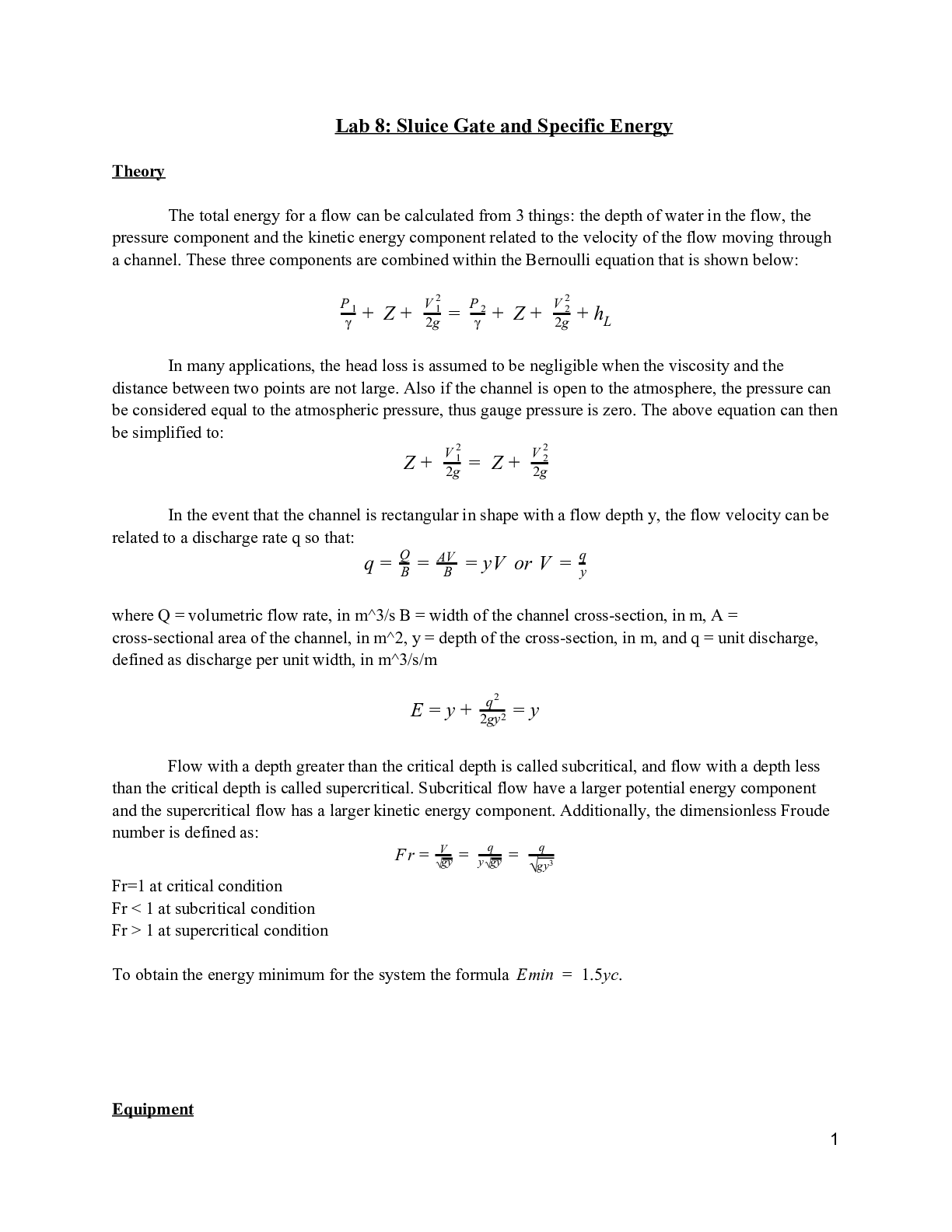
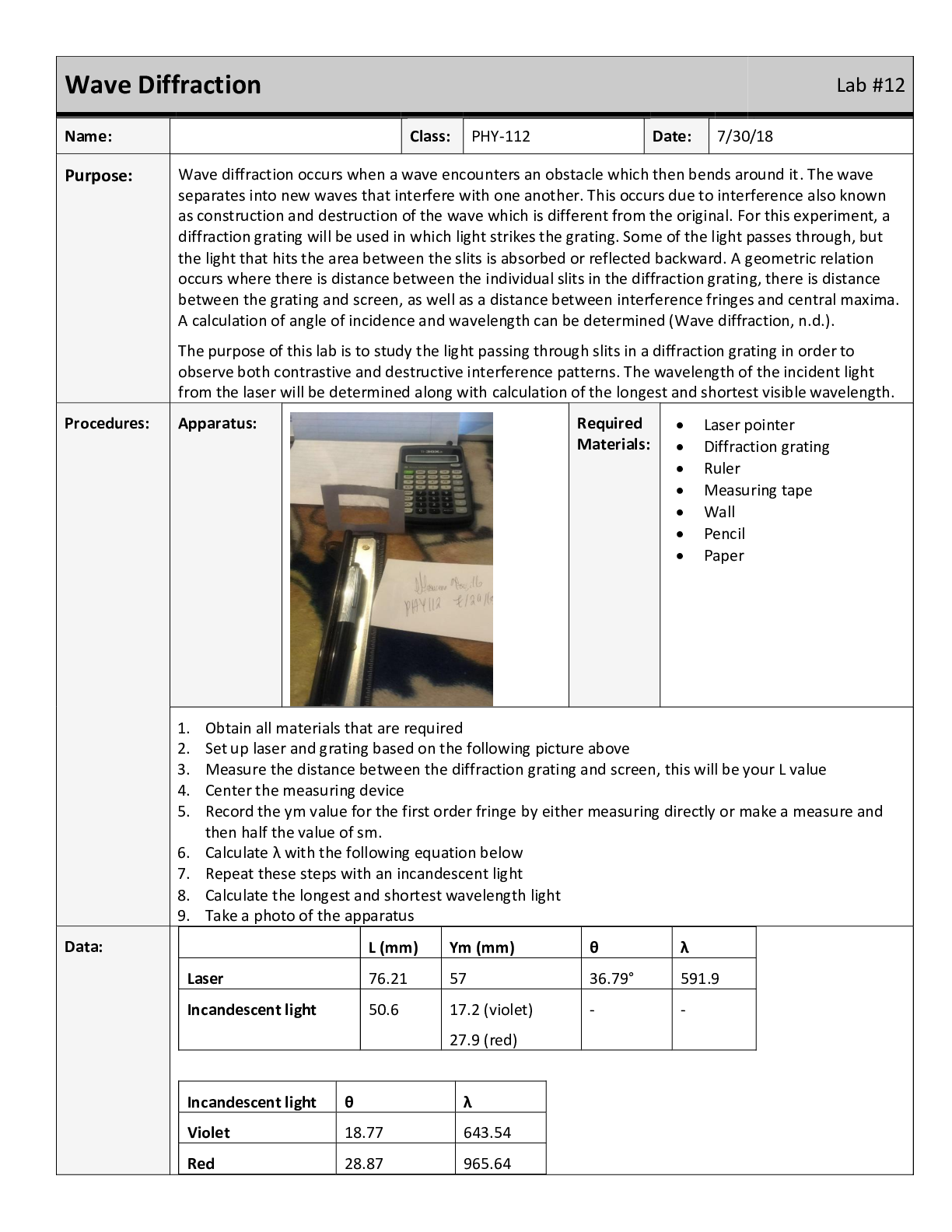

.png)

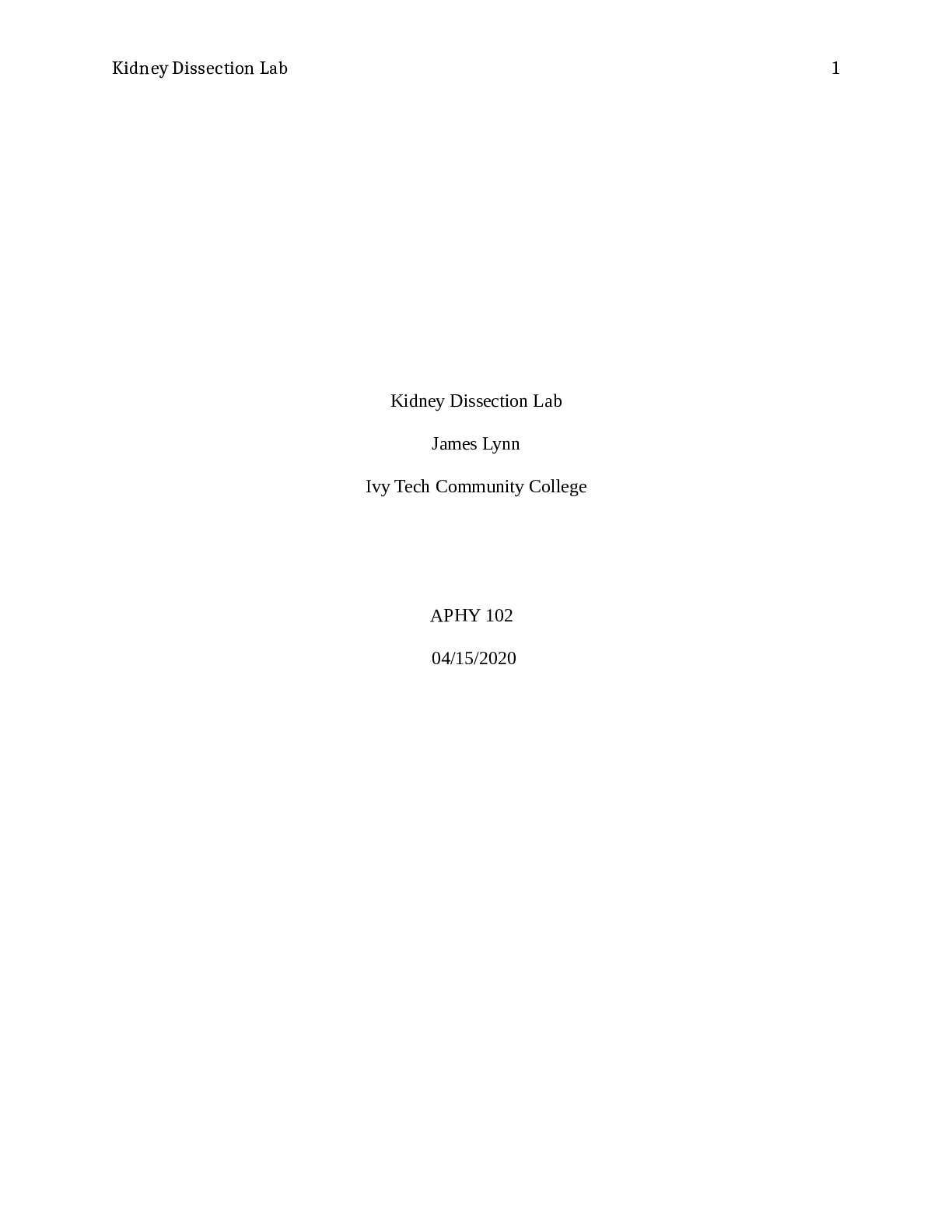



.png)

